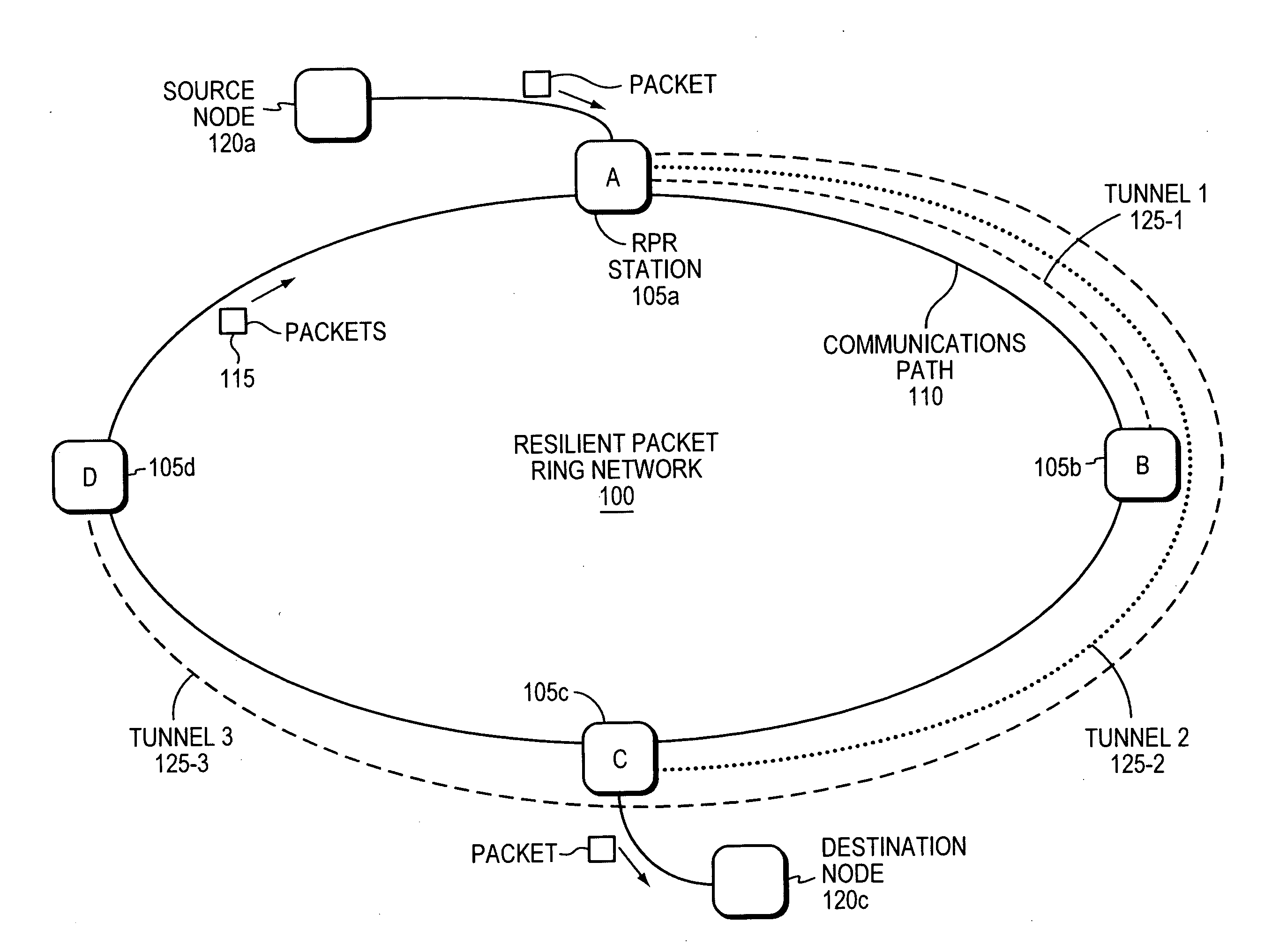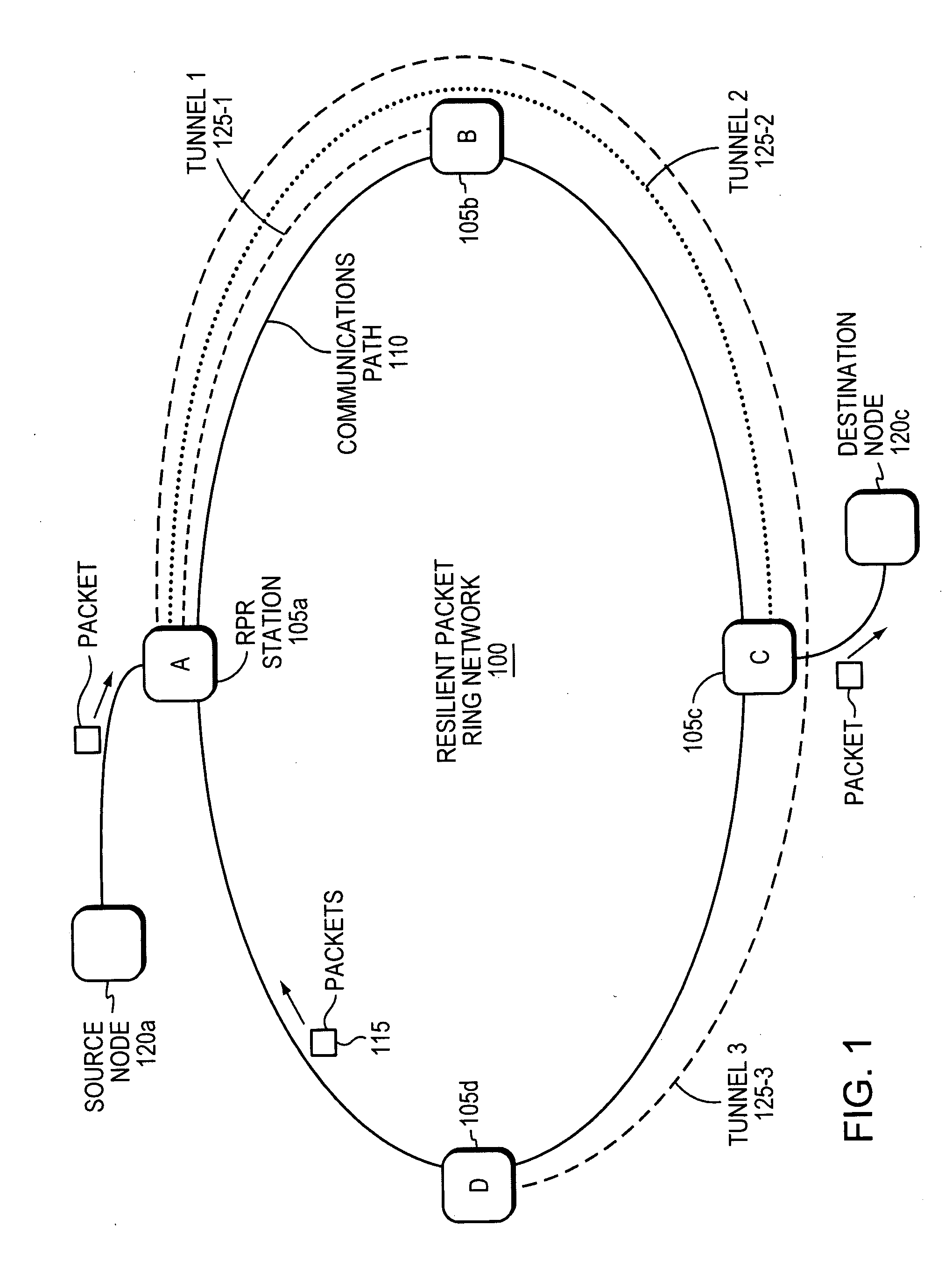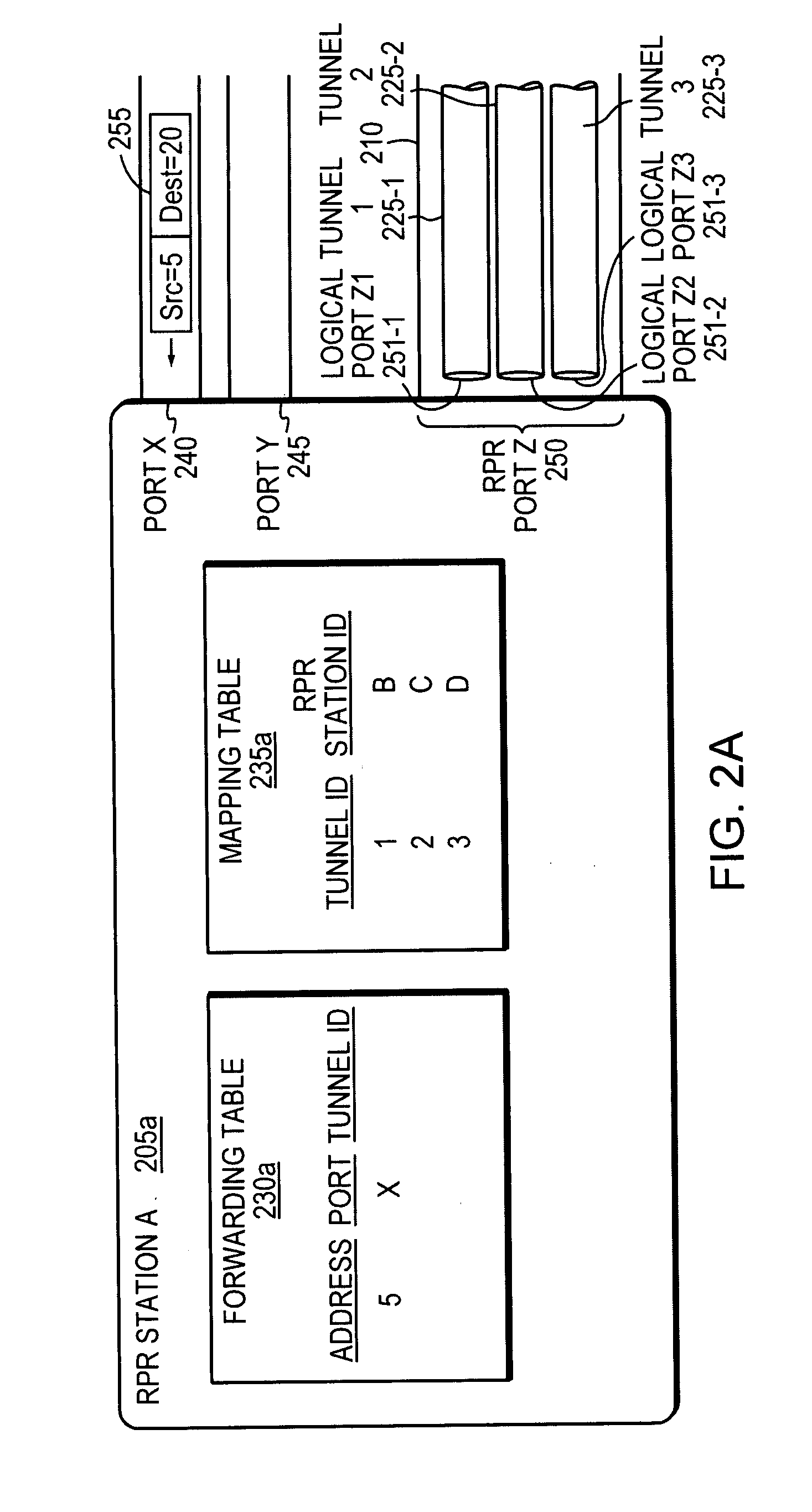Method and apparatus for carrying unknown traffic over a resilient packet ring (RPR) without flooding
a technology of resilient packet ring and unknown traffic, which is applied in the direction of data switching network, data switching by path configuration, digital transmission, etc., can solve the problems of limiting the reuse of bandwidth in different spans of the rpr ring network, and consuming network resources
- Summary
- Abstract
- Description
- Claims
- Application Information
AI Technical Summary
Problems solved by technology
Method used
Image
Examples
Embodiment Construction
[0013]A description of example embodiments of the invention follows.
[0014]FIG. 1 is a network diagram of a Resilient Packet Ring (RPR) network (“RPR ring”) 100, also referred to herein simply as a “ring.” The ring 100 has four physical switches 105a-d coupled by a communications path 110. In the example, traffic (e.g., packets) 115 travels clockwise around the ring 100, three tunnels 125-1,2,3 are configured by provisioning or signaling, for example, on the ring 100. The tunnels include: Tunnel 1125-1 for traffic traveling from Station A 105a to Station B 105b, Tunnel 2125-2 for traffic traveling from Station A 105a to Station C 105c, and Tunnel 3125-3 for traffic traveling from Station A 105a to Station D 105d. The terms “traffic” and “communications” are synonymous as used herein. The term “traffic” can be packets or frames, which are also synonymous as used herein.
[0015]A Resilient Packet Ring (RPR) protocol refers to a ring-based network protocol that supports bridging to other ...
PUM
 Login to View More
Login to View More Abstract
Description
Claims
Application Information
 Login to View More
Login to View More - R&D
- Intellectual Property
- Life Sciences
- Materials
- Tech Scout
- Unparalleled Data Quality
- Higher Quality Content
- 60% Fewer Hallucinations
Browse by: Latest US Patents, China's latest patents, Technical Efficacy Thesaurus, Application Domain, Technology Topic, Popular Technical Reports.
© 2025 PatSnap. All rights reserved.Legal|Privacy policy|Modern Slavery Act Transparency Statement|Sitemap|About US| Contact US: help@patsnap.com



